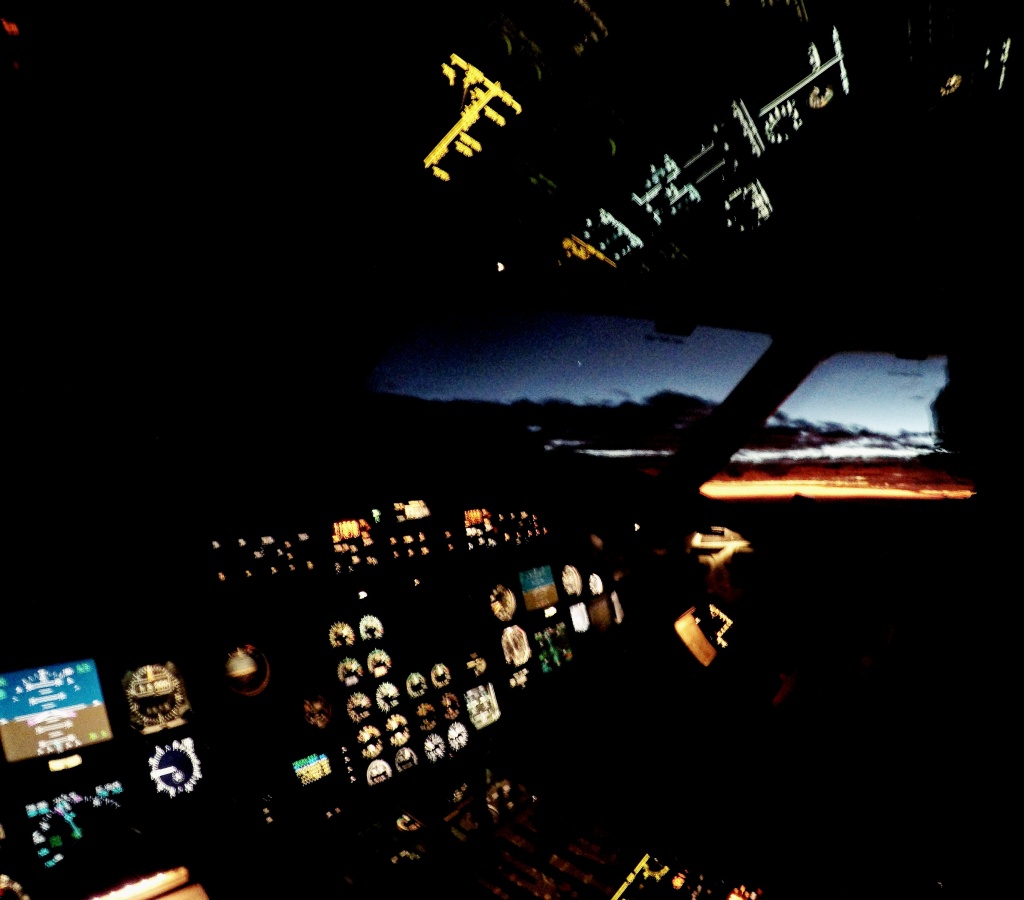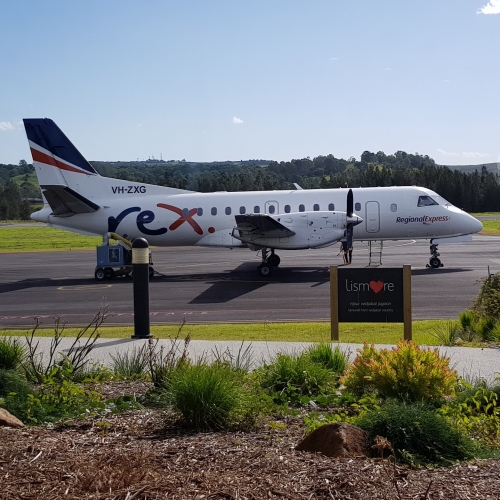A week-long vacation exploring the stunning beaches of southern New South Wales with my beautiful girlfriend, who had just finished her university exams, really gave me the chance to rest and recover. The much-needed quality time let my sympathetic nervous system switch off for the first time since May.
Even though I had had some time off from work, I hadn’t taken the time or given myself permission to fully switch off, disconnect and let myself unwind from the tension of being “on” and under pressure for the last few months. There was always something to study.

With a relaxed body and a calm mind, I felt recharged and ready to get back to work. I had committed the second of my two-week break to studying the flight manuals full time. As it turns out, I retain information far more easily with healthy stress levels. Also compared to six weeks earlier, I had gained some real commercial flight experience to which I could now anchor the theory.
I had actually seen the pages of the books I was studying, happen in real life.
At the beginning of this second week, I was blessed with a perfect roster for December. For the first half of the month, I had eleven days scheduled with one Training Captain. All flown out of Sydney to a variety of destinations in the network. Those thirty-two flights would lead straight into a line check on the 18th of the December.
This is more than I could have hoped for and exactly what I needed to consolidate my new skills and habits. And most importantly; build my confidence.
A problem I had faced with constantly flying with different training Training Captains; is I would end up being taught the same procedure or skill with different, often conflicting techniques and opinions. This lack of consistency created uncertainty and confusion. Also, since I kept getting lessons on the same topics, I missed or skimmed lightly over the topics that trainers found less interesting or more difficult to cover.
I learned from this experience and was able to avoid and mitigate this challenge during my training to upgrade to captain, which I’ll discuss in a later post.
I was excited to go flying again, I’d heard good things about this particular Training Captain, Hof as he was nicknamed.
I spent the week reading, studying and preparing for my upcoming flights.
With all my flights based out of Sydney, I would spend four days at a time living out of my small suitcase between a Sydney airport hotel and different regional town hotels. Then back to Albury for a day or two off.
With little free time at home, this conveniently gave me a distraction-free life, that was able to fully immerse me into my training.
Flying with the one training captain I became more confident; cultivating and consolidating my own habits and professional behaviours.
This was also the most intense flying I had ever done by this point. I remember walking through the Sydney domestic terminal at the end of four solid days of flying, barely able to keep my eyes open. I was exhausted, a good exhausted, the kind you feel when you’ve worked hard and you’re happy with what you have achieved.
The night before we had experienced the worst weather I had ever encountered. In early December, it is common for strong cold fronts and storms to pass through Victoria and Southern New South Wales.
That evening, while on our way to Parkes, a Town 300km west of Sydney, we found ourselves stuck flying at 8,000 feet dodging storms, much lower than the normal 16,000 feet. Even though flying low burns more fuel, it kept us below the freezing level and the cloud base, which was our best chance to avoid the worst of the turbulence and icing conditions. Unlike a jet that can out climb and fly over most weather, sometimes going low is the best or only option for a turbo-prop, especially in the summertime when the clouds are a typically a few thousand feet higher than during wintertime.
The Hof and I were working well as a team, we were on our third day in a row together.
While avoiding the frequent storm cells, I still remember the dark blue, grey and orange sky, as we flew west towards the setting sun which illuminated the clouds, making them look as though they were on fire.

A few moments later, we flew into the invisible wind-shear of a dry micro-burst, a down-draft of air from a nearby storm cell, that pushed the aircraft down several hundred feet. The autopilot pitched the nose of the aircraft up to a nose-high attitude, unsuccessfully trying to hold our cruise altitude. I pushed the power up from 60% to 80% of full power, cautious not to exceed the engine temperature limitation. I scanned the instruments to see our pitch attitude above 15 degrees up, the altimeter 750 feet low and still descending as well as the airspeed rapidly reducing below our already reduced speed (that was set at turbulence penetration speed) towards the stall speed. My thumb hovered over the red autopilot disconnect button on the control yoke, ready to manually correct the attitude and recover speed before we stalled. Then Hof, with a few swift pushes and flicks on the Mode Select Panel, reconfigured the autopilot mode, putting the aircraft into a descent which recovered our attitude and airspeed, moments before needing to perform a more drastic upset recovery manoeuvre.
Although potentially scary, this experience gave me even more confidence in operating the aircraft.

We continued on, avoiding storm cells all the way to Parkes. Parkes just happened to have its main runway (the only runway equipped with runway lights and runway aligned instrument approach) closed for maintenance. So we were forced to circle and land onto the shorter secondary runway, with only dim, purple, portable runway lights for guidance. This was the craziest flying I’d experienced yet. And I was loving it.

Hof made the challenging approach and landed safely, before parking us on the bay. I skipped down the stairs with the buzz of adrenaline that had sharpened my sensors. The passengers disembarked, a little pale-faced, thanking me and expressing their delight to be safely back on ground after the bumpy ride.
I was finally feeling like I was getting competent at my job, this was a welcome feeling, and I had a big smile to show for it.
Hof and I continued to fly together, preparing me for my third attempt at my check-to-line, consolidating my skills and knowledge to a point where I felt that I owned my skills, not just borrowing or mimicking what I had seen or been taught.
A check-to-line is usually a single day, four sector duty for First Officers. For my third chance, I’d been scheduled a two day, seven-sector, “overnight” duty at the end of my third and last trip, operating out of Sydney.
Nervous as usual, I signed on in the Sydney crew room before meeting my Check Captain for the day. James, A very friendly guy with a big smile, he didn’t look much older than 26 and had a very relaxed demeanour, which helped my nerves.
Our duty took us up the north coast of New South Wales to Ballina and back, then out to Parkes to stay for the night.
Things were going smoothly, despite the nerves of knowing I was on my third chance, this time I could trust and rely on my new pilot habits that were recently well practised and consolidated.
That night in the Parkes hotel I could barely sleep. How could I? I was in the middle of the most important flight test of my career!
The next day was another long day, four sectors that I couldn’t wait to be over. I felt like I was going well. It seemed to be going smoothly, but I also was getting little to no feedback and I was beginning to feel the fatigue of minimal sleep.
On the last sector back to Sydney, James began to ask different questions that I didn’t expect or know the answers to from all my studying.
“Suppose you are flying with a Captain, and during engine start, you see him flick the igniter switch on with his left knuckle while holding the starter, which is, of course, non-standard, instead of switching it with his right hand as per the procedure. How would you handle this? Would you say something?”
I had to think about it, it was a weird question. “Well, It’s not SOP, but it’s also not unsafe,” I said, trying to avoid a definitive yes or no answer that could be deemed wrong.
James then went on to discuss a few more examples. Making the learning point that; flying with regular captains on the line, I might see some different things. “So first ask yourself, is it unsafe? If it seems unsafe or likely to be an unintentional mistake or slip, speak up! And speak up early. If it’s perfectly safe, but perhaps not really by the book, be diplomatic, it’s not your job as an FO to police the captain. Just make sure it’s safe. If you don’t understand or know how or why they do something, feel free to ask an open question about it in a time of lower workload.”
“However, do yourself a favour and stick to SOPs, try not to pick up second-hand bad habits that you see. Consult the manual if you’re unsure and try to understand why you’re doing things a certain way.”
This was good advice (and still is).
So if he’s talking about Flying with line captains, I thought to myself, maybe that means I’ve passed! I got a little excited, but only a little. This chicken hadn’t quite hatched yet, we still have to land in Sydney.
To my delight, the post-flight debrief was short and ended with “Congratulations” and a handshake. I was so happy and extremely relieved. The weight of my world had lifted off my shoulders. I was finally a regional airline pilot, just in time for Christmas.
I couldn’t wait to get out there and go flying again!

Thank-you for reading.
Please follow to stay up to date, I post monthly.
Or, Follow on Instagram @that777pilot for updates and photos from my day to day flying in a Boeing 777 around the world.












